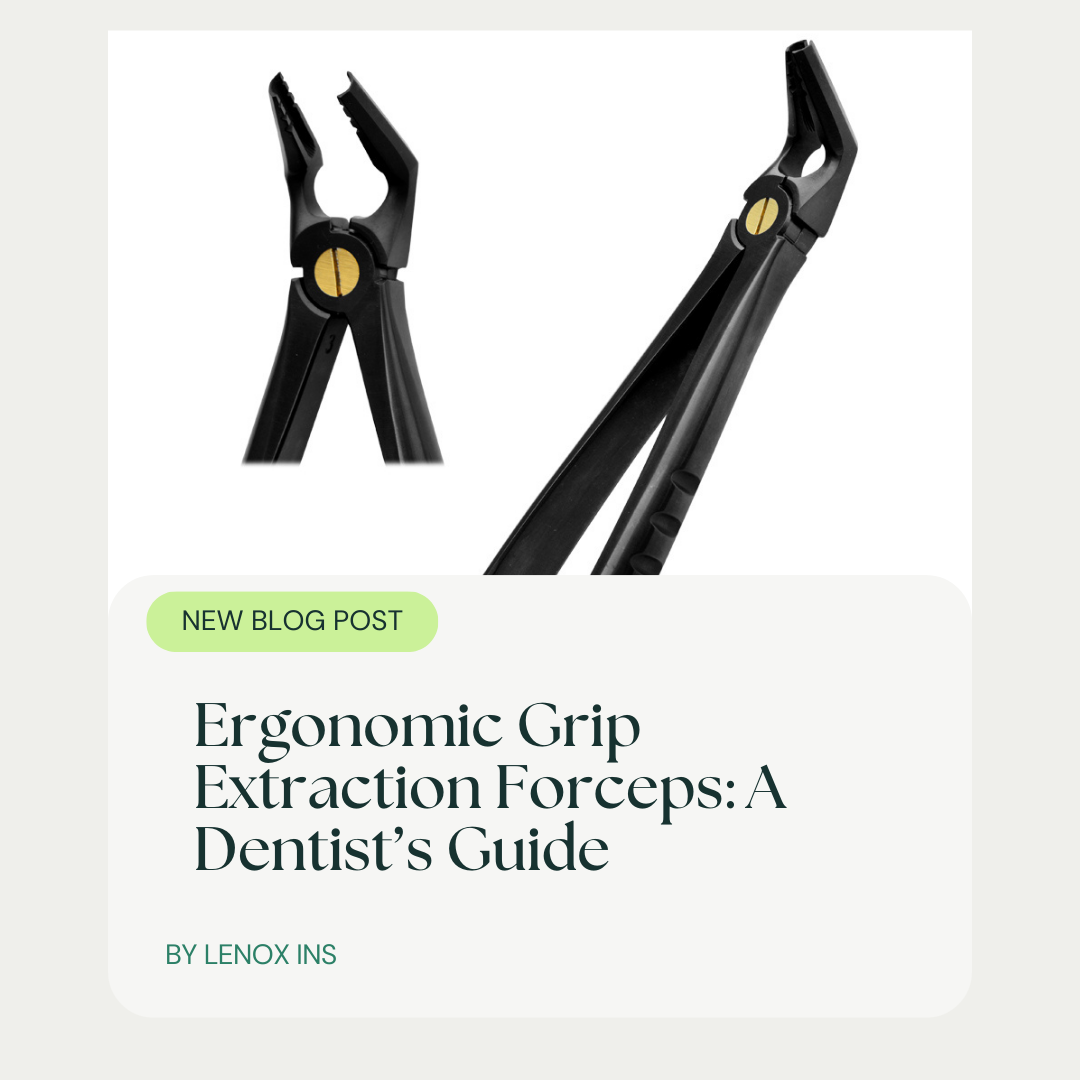Choosing the Best Ring Forceps: A Comprehensive How-To
- Posted October 22, 2024
- by lenoxinstro
When it comes to surgeries and procedures in endoscopy, selecting the right ring forceps can be a challenging decision. With various types available, finding the tool that best meets your needs—whether for plastic surgical procedures or biopsy applications—can significantly affect your efficiency and success. This guide will help you navigate the different types of ring forceps, key factors to consider, and how ergonomic features can enhance user comfort. By addressing these considerations, I aim to help you make an informed choice, ultimately leading to improved outcomes in your practice.
Understanding the Different Types of Ring Forceps

In this section, I will explore the various styles of ring forceps available, highlighting the key differences between straight and curved designs. I’ll address the specialized forceps tailored for unique medical fields, including their application in procedures involving the cervical canal. Furthermore, I will compare sizes and lengths, guiding you on selecting the right forceps for your specific tasks. This will provide you with valuable insights needed to make an informed decision.
Overview of Common Ring Forceps Styles
When assessing the various styles of ring forceps, I find that the primary distinctions lie between straight and curved designs. Straight forceps are ideal for reaching deeper tissues and applying direct pressure on cervical polyps or other cervical structures, while curved forceps provide better visibility and access to wounds where precision is essential. The integration of a screw mechanism can enhance grip strength, contributing to effective tissue manipulation during medical procedures, particularly in delicate cervical canal work.
Differences Between Straight and Curved Designs
The choice between straight and curved ring forceps is crucial for achieving the desired outcome during surgical procedures. Straight forceps allow for direct access and can effectively tackle tasks involving the surgical suture of deeper tissues or removal of polyps, offering precision in reaching the target area. On the other hand, curved forceps offer enhanced visibility and control, making them particularly useful when working around sensitive structures, especially when utilizing an ultrasound for guidance or assessing tissue integrity prior to sterilization.
- Understanding the purpose of each design is key.
- Straight forceps are optimal for deep tissue access.
- Curved forceps facilitate better visibility and precision.
- Consider the specific application, such as polyp removal.
- Evaluate the required sterilization protocols for each instrument.
Specialized Forceps for Specific Medical Fields
In specific medical fields such as gynecology, specialized ring forceps play a crucial role during procedures like hysteroscopy. These forceps often feature jaws designed with precision to grasp and manipulate delicate tissues, which is essential for preventing bleeding during surgeries. I often recommend titanium options for their strength and resistance to corrosion, ensuring that these instruments remain reliable throughout various surgical applications, including the use of surgical scissors in tandem for tissue excision.
Comparing Sizes and Lengths for Various Tasks
When selecting ring forceps for tasks across various medical procedures, I pay close attention to size and length. A shorter forceps design might work well for accessing the endometrium during hysteroscopy, while longer options are preferred in laparoscopy, allowing for deeper reach without causing fatigue to the surgeon‘s hand. Additionally, the compatibility with other instruments, such as scissors and retractors, can give you the leverage needed in intricate procedures, making the right choice essential for precision and ease of use.
Factors to Consider When Selecting Ring Forceps

When choosing the right ring forceps, I emphasize identifying your specific needs and applications. Whether you’re performing dissection or placing an intrauterine device, understanding the task at hand helps streamline your selection process. Evaluating grip and handling comfort ensures effective control, while considering material options like tungsten carbide, ceramic, or steel impacts durability. Finally, budgeting wisely allows for cost-effectiveness without compromising quality.
Identifying Your Specific Needs and Applications
Identifying your specific needs and applications is essential when selecting ring forceps. For instance, during a pelvic examination, the chosen forceps must allow for precise control and minimize the risk of blood vessel damage. Additionally, I recommend considering the material, such as high-quality alloy options, which ensure durability and longevity, particularly if you are using these instruments as tweezers to grasp delicate tissues:
- Assess the procedure type to determine instrument requirements.
- Consider the importance of grip comfort in reducing hand fatigue.
- Evaluate alloy options for optimal performance and durability.
- Choose appropriate size and design based on your specific tasks.
Evaluating Grip and Handling Comfort
Evaluating grip and handling comfort is essential when selecting ring forceps, as I have found that the right fit can significantly reduce hand fatigue during procedures, particularly for surgeons who work with delicate tissues. I recommend trying different lengths and styles to see which feels most comfortable in your hand; this can enhance your ability to perform precise tasks, such as manipulating wire or handling small dental instruments without the risk of infection. Prioritizing ergonomic designs not only improves your grip but also minimizes the chances of accidental slips while working near sensitive areas like the tooth or cervical canal.
- Assess the fit of the forceps in your hand.
- Test various lengths and styles for comfort.
- Choose ergonomic designs to reduce fatigue.
- Ensure grip quality to minimize risk during procedures.
- Prioritize durability to withstand repeated use.
Considering Material and Build Quality
When selecting ring forceps, considering material and build quality is paramount to ensure longevity and effectiveness in procedures. I often recommend opting for instruments made from materials that resist corrosion, such as stainless steel or titanium, enhancing their durability during repeated autoclave sterilization. It’s crucial to choose quality instruments, as the right build can impact your ability to precisely manipulate tissues while minimizing risks associated with disease transmission during patient care.
Budgeting for Cost-Effectiveness Without Compromising Quality
When budgeting for ring forceps, I emphasize the importance of balancing cost-effectiveness with quality. Investing in instruments made from durable materials like tungsten can prevent frequent replacements, ultimately saving money over time. I also recommend looking for features such as a reliable ratchet mechanism and compatibility with a needle holder, especially for procedures requiring precision and hemostasis in delicate areas like the uterus. This approach ensures that while you’re being mindful of costs, you’re not compromising the effectiveness and safety of your medical practice.
Materials and Durability of Ring Forceps

When selecting ring forceps, I focus on key materials like stainless steel and titanium, weighing their benefits for surgical instruments. I assess corrosion resistance to ensure longevity and consider sterilization compatibility for safe use. Understanding the importance of build quality and craftsmanship will enhance your experience with each hemostat, ultimately supporting your needs in delicate medical procedures.
Choosing Between Stainless Steel and Titanium
When choosing ring forceps, I often face the decision between stainless steel and titanium based on their unique benefits. Stainless steel is renowned for its strength and resistance to corrosion, making it a reliable choice for general surgical applications. Meanwhile, titanium‘s lightweight nature and superior corrosion resistance make it ideal for delicate procedures where maneuverability is essential. Both materials offer excellent durability, but the choice often depends on the specific demands of your procedures and the instruments you plan to use them with: forceps
| Material | Strength | Corrosion Resistance | Weight | Best for |
|---|---|---|---|---|
| Stainless Steel | High | Moderate | Heavier | General surgical use |
| Titanium | High | High | Lightweight | Delicate procedures |
Assessing Corrosion Resistance for Longevity
When I evaluate ring forceps, assessing corrosion resistance is essential for ensuring longevity and consistent performance. Materials such as stainless steel and titanium are often preferred due to their inherent resistance to rust and degradation, which is crucial in maintaining instrument functionality through repeated sterilization processes. In my experience, investing in high-quality forceps can prevent unnecessary replacements, ultimately safeguarding both your practice’s budget and the safety of patient care.
Understanding the Importance of Sterilization Compatibility
Understanding sterilization compatibility is critical when selecting ring forceps for surgical procedures. I emphasize that not all materials can withstand the rigorous processes of sterilization, which can include high temperatures and harsh chemicals. For example, instruments made from stainless steel and titanium offer strong corrosion resistance and can endure repeated autoclave cycles, ensuring they remain safe and effective for patient care:
- Choose materials that hold up to repeated sterilization.
- Ensure instruments meet safety and hygiene standards.
- Invest in durable forceps to minimize replacements.
Examining Build Quality and Craftsmanship
When I examine the build quality and craftsmanship of ring forceps, I always prioritize instruments that blend functionality with durability. High-quality craftsmanship often results in improved ergonomics and precision, which are essential during surgical procedures. Additionally, attention to detail in the manufacturing process can significantly impact the tool’s longevity and effectiveness, ultimately ensuring reliable performance under various conditions:
| Feature | Importance | How It Affects Performance |
|---|---|---|
| Material Strength | Prevents bending and breaks | Ensures consistent force application |
| Ergonomic Design | Reduces hand fatigue | Allows for extended use without discomfort |
| Precision of Jaws | Enables accurate tissue manipulation | Minimizes surgical errors |
Ergonomic Features and User Comfort

When selecting ring forceps, ergonomic features significantly impact user comfort and efficiency during procedures. In the following sections, I will discuss the importance of handle design for extended use, weight and balance considerations, and the need for non-slip grips to enhance control. Additionally, I will cover ease of use with gloves and performance in wet conditions, ensuring you choose the right instruments for your needs.
Importance of Handle Design for Extended Use
The design of the handle on ring forceps is essential for extended use, as I’ve found that a well-crafted handle can significantly enhance comfort and reduce fatigue during lengthy procedures. An ergonomic handle provides a secure grip, allowing me to maintain control and precision, especially when working on delicate tissues. By prioritizing handle design, I ensure that I can operate effectively without discomfort, which is crucial for successful outcomes in various surgical applications:
| Feature | Benefit | Impact on Use |
|---|---|---|
| Ergonomic Shape | Improved comfort | Reduces hand fatigue |
| Textured Grip | Enhanced control | Minimizes slippage |
| Weight Distribution | Balanced feel | Allows longer use without strain |
Weight and Balance Considerations
When selecting ring forceps, the weight and balance of the instrument play critical roles in user comfort and effectiveness during procedures. I have observed that a well-balanced forcep allows for longer use without strain, which is essential during intricate surgeries where precision is crucial. By choosing forceps with optimal weight distribution, I can maintain stability and control, reducing the risk of hand fatigue and enhancing my overall performance in delicate tasks.
Non-Slip Grips for Enhanced Control
Non-slip grips are essential for enhancing control when using ring forceps during procedures. From my experience, having a textured surface significantly reduces the risk of slippage, especially when working in delicate areas or during lengthy surgeries. This feature not only improves precision in handling tissues but also provides peace of mind, allowing me to focus on the task at hand without worrying about losing grip on the instrument.
| Feature | Benefit | Impact on Use |
|---|---|---|
| Textured Grip | Enhanced Control | Minimizes Slippage |
| Ergonomic Design | Reduced Fatigue | Allows for Extended Use |
| Weight Distribution | Balanced Feel | Increases Stability |
Ease of Use With Gloves and in Wet Conditions
When using ring forceps while wearing gloves or in wet conditions, I’ve found that grip and control become paramount. Selecting forceps with a textured grip not only enhances handling but also minimizes the risk of slippage, which is crucial during delicate procedures. It’s essential to ensure that your chosen instruments perform reliably, even when working in environments that demand precision and stability, thus allowing for effective manipulation without compromising safety.
Matching Ring Forceps to Procedures

Matching Ring Forceps to Procedures
Selecting the right ring forceps is essential for various surgical applications, enhancing precision and efficiency in medical practice. In my experience, choosing appropriate forceps for dental procedures ensures effective tissue management, while specialized options for gynecological tasks improve safety and outcomes. This section covers how to customize your forceps for specialized tasks, focusing on the unique requirements of each procedure.
Selecting Forceps for Surgical Applications
Selecting the right ring forceps for surgical applications is critical for achieving optimal results. I emphasize the importance of understanding the specific requirements of each procedure, whether it’s for gynecological tasks or dental surgeries. By matching the design and material of the forceps to the intended use, I can enhance precision, reduce the risk of tissue damage, and improve overall patient safety:
- Identify the type of surgery to determine the necessary forceps.
- Consider the size and shape based on the targeted area.
- Assess the grip and control for effective handling.
- Choose materials that ensure durability and ease of sterilization.
- Match specialized forceps to improve outcomes in specific procedures.
Appropriate Choices for Dental Practices
When selecting ring forceps for dental practices, it’s important to focus on instruments that offer precision and control. I recommend using curved designs for procedures involving soft tissues, as they provide better visibility and access, especially in tight spaces like the oral cavity. Additionally, ensuring that the forceps have a non-slip grip can enhance dexterity and reduce the risk of accidents during delicate manipulations: micro surgical forceps tweezers tc 17cm curved
| Forceps Type | Use Case | Benefits |
|---|---|---|
| Curved Ring Forceps | Soft tissue procedures | Improved visibility and control |
| Straight Ring Forceps | Extraction tasks | Direct access and precision |
| Ratchet Mechanism Forceps | Extended tissue handling | Enhanced grip strength |
Forceps for Gynecological Procedures
When selecting ring forceps for gynecological procedures, I emphasize the importance of precision and control. Curved forceps are particularly advantageous in procedures such as hysteroscopy, where visibility is limited, and delicate manipulation of tissues is required. I have found that using specialized forceps that are designed with fine jaws can help in grasping and maneuvering uterine tissue effectively, minimizing the risk of damage during surgery.
Customizing Options for Specialized Tasks
Customizing ring forceps for specialized tasks means choosing instruments that are tailored to specific surgical requirements. From my experience, I find that using forceps with modified jaw shapes or unique gripping features can significantly enhance my ability to manipulate delicate tissues in procedures like hysteroscopy or dental extractions. When selecting these specialized forceps, I prioritize features that optimize control and precision, allowing me to navigate complex anatomical structures with confidence and minimize the risk of complications during surgery.
Maintenance and Care for Longevity

To ensure longevity and optimal performance of your ring forceps, I emphasize the importance of proper maintenance and care. This includes best practices for cleaning and sterilization, which are crucial in preventing cross-contamination. Proper storage techniques will help prevent damage, while regular inspections for wear and tear allow for early detection of any issues. Lastly, knowing when to repair or replace your forceps can save you time and resources, ensuring your instruments remain effective for all surgical applications.
Best Practices for Cleaning and Sterilization
To maintain the longevity of your ring forceps, it’s vital to follow best practices for cleaning and sterilization. I recommend thoroughly washing the instruments with warm, soapy water immediately after use to remove any organic material. Following this, using an ultrasonic cleaner can enhance the cleaning process, ensuring that all crevices are free from debris before proceeding to sterilization.
| Step | Description |
|---|---|
| 1. Wash | Clean instruments with warm, soapy water to remove debris. |
| 2. Ultrasonic Cleaning | Use an ultrasonic cleaner to ensure thorough cleaning. |
| 3. Sterilization | Follow specific sterilization protocols suitable for the forceps material. |
Finally, I ensure that ring forceps are dried properly and stored in a clean, dry location to prevent corrosion or damage, keeping them ready for future use:
Proper Storage Techniques to Prevent Damage
Proper storage techniques are essential for preventing damage to your ring forceps and ensuring they remain in optimal condition for your next use. I recommend storing forceps in a dedicated tray or cabinet that protects them from moisture and physical impact, as exposure to these elements can lead to corrosion or misalignment of the instrument. Additionally, using soft pouches or protective cases helps reduce the risk of scratches and other damage, keeping the forceps ready for precise application during surgical procedures:
| Storage Method | Description | Benefits |
|---|---|---|
| Dedicated Tray | Store forceps in a clean, dry tray. | Protects against moisture and physical damage. |
| Soft Pouches | Wrap forceps in soft, protective pouches. | Minimizes scratches and maintains instrument integrity. |
| Designated Cabinet | Use a cabinet specifically for storing surgical instruments. | Offers organization and ease of access while preventing contamination. |
Regular Inspection for Wear and Tear
Regular inspection for wear and tear on ring forceps is essential to maintain their performance and reliability. I recommend checking the instruments for any signs of damage, including bent jaws or worn-out grip surfaces, as these imperfections can lead to complications during procedures. By routinely examining your forceps, you can identify issues early and decide whether to repair or replace them, thereby ensuring that your instruments remain effective and safe for use in surgical applications.
| Inspection Aspect | What to Look For | Action Required |
|---|---|---|
| Jaws | Bent or damaged jaws | Repair or replace if necessary |
| Grip Surface | Worn-out or slippery grip | Consider replacement for better control |
| Overall Condition | Signs of corrosion or discoloration | Examine for sterilization issues |
Knowing When to Repair or Replace Your Forceps
Knowing when to repair or replace your ring forceps is crucial for maintaining their performance and ensuring patient safety. As I evaluate my instruments, I look for signs of wear, such as bent jaws or a compromised grip surface, which can detract from the precision needed during procedures. If I notice any significant damage or if the forceps no longer function effectively after repairs, I prioritize replacing them to maintain the high standards required in my practice: apical lower univarsal forcep fig 151
- Regularly inspect for signs of wear and tear.
- Look for bent jaws or worn grip surfaces.
- Assess whether repairs can restore effectiveness.
- Prioritize replacement for significant damage.
Conclusion
Choosing the right ring forceps is essential for achieving precision and effectiveness in various medical procedures. Understanding the differences between straight and curved designs, along with the specific applications for specialized tasks, enables you to select the best instruments for your needs. Prioritizing ergonomic features and material quality ensures comfort and durability during use. By following these guidelines, you enhance your surgical performance while ensuring patient safety and care quality.






































